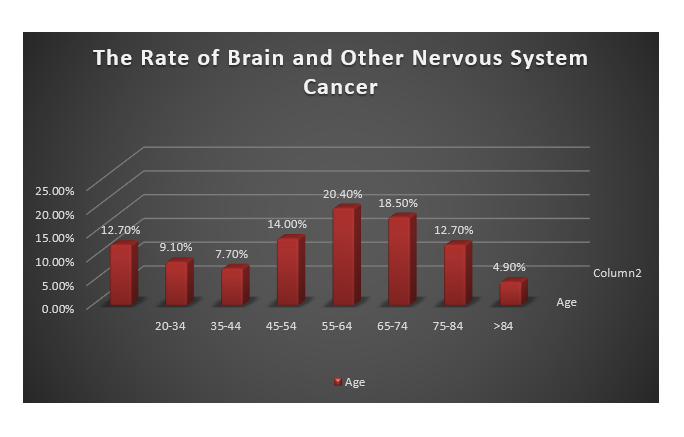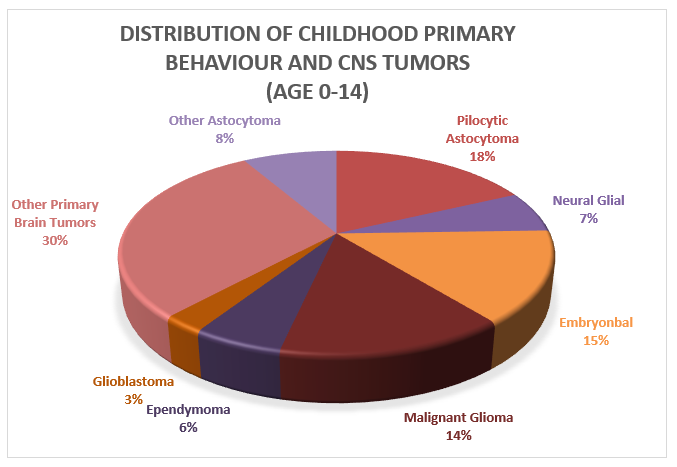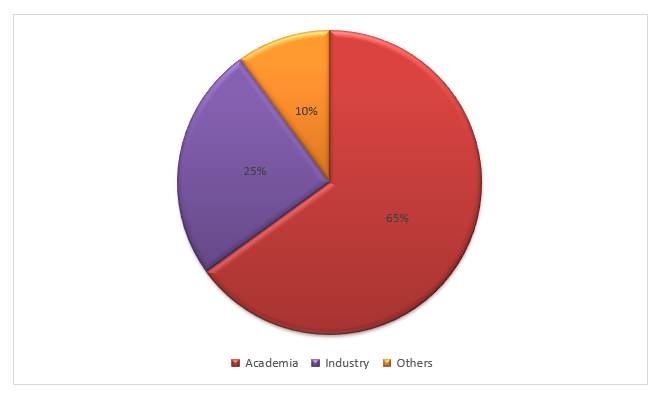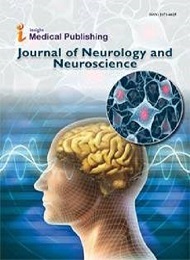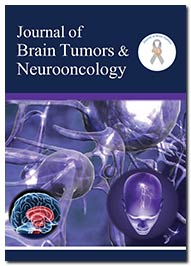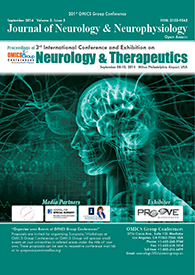Theme: Unravelling the Delusions & Misconceptions in Neurology and Neurosurgery
Neurology Meet 2019
Neurology Meet 2019 takes a lot of privilege in welcoming all the participants from all over the world to attend “2nd International Conference on Neurology and Neurosurgery” scheduled to take place on December 05-06, 2019 in Abu Dhabi, UAE. ICNN 2019 includes Keynote presentations, special sessions, oral talks Workshops, Symposiums, Poster Presentations, and Exhibitions. With its two days of agenda, Neurology Meet 2019 will focus on the theme “Unravelling the Delusions & Misconceptions in Neurology and Neurosurgery”. This conference provides an excellent platform and opportunity to discuss the about the leading developments, researches, and challenges within the field of Neurology, Neuroscience, and Neurosurgery.
Neurology Meet 2019 is exclusively designed for Neurologist, Neurooncologist, Neurosurgeons, Neuroimmunologists, Physicians, Health Care Researchers, Biochemists, Biotechnologists, Neuropediatricians, Neuroradiologists, Neuropathologists, Medical Oncologists, Neuroepidemiologists, Neurophysiologists, Rehabilitation Specialists, Pharmacists, Nurse/nurse-practitioners, Students, Researchers, Professors, Directors, Head of Department, Presidents, Academicians, students along with industries and Neuroscience Researchers and Students from academia from Associations and Societies, and Business Entrepreneurs. This conference also provides the time to collaborate with industry peers and discover knowledge and resources that can be used to achieve personal and organizational goals.
Neurology is the branch of medicine dealing with the study of disorders of the nervous system with the diagnosis and treatment of all categories of conditions and disease involving the peripheral and central nervous systems, including their coverings, blood vessels, and all effector tissue, such as muscle. Neurosurgery also called as neurological surgery is concerned with the diagnosis, prevention, surgical treatment and rehabilitation of disorders which affect the nervous system including the brain, spinal cord, peripheral nerves, and extra-cranial cerebrovascular system.
Track 1: Neuroscience & Neurology
Neuroscience (or neurobiology) is a concern with the scientific study of the structure and function of the nervous system. Neurobiology is an interdisciplinary branch of biology, which combines anatomy, physiology, molecular biology, developmental biology, mathematical modeling, cytology, and psychology to understand the fundamental and emergent properties of neural circuits and neurons.
Neurology involves the study of clinical diagnosis and treatment of the peripheral, autonomic and central nervous systems. Neurology is a branch of medicine that deals with different diseases and disorders of the nervous system ranging from Alzheimer’s. Neurologic disorders are wide-ranging and they have various causes, complications, and outcomes. All neurological disorders encompass the brain, spinal column or nerves. Symptoms of the disorders depend on where damage occurs. Different areas that monitor movement, communication, and hearing, vision, cognitive (or thinking) can be affected. For example, ADHD tends to have greater effects on behavior whereas cerebral palsy tends to have more physical symptoms. Many disorders result in additional needs requiring life-long management.
Track 2: Genomics & Molecular Neurology
Genomics defined as the interdisciplinary field of science focusing on the structure, function, evolution, mapping, and editing of genomics. The genome is an organism's which are the complete set of DNA, including all of the genes. In contrast to genetics, which is referred to the study of individual genes and their roles in inheritance, genomics aims at the collective characterization and quantification of genes, which direct the production of proteins with the presence of enzymes and messenger molecules. The proteins makeup body structures such as organs and tissues as well as control chemical reactions and carry signals between cells. Genomics also involves the sequencing and the analysis of genomes through the uses of high throughput DNA sequencing and bioinformatics to assemble and analyze the function and structure of whole genomes.
Molecular neurology is a branch of neuroscience which observes the concepts of molecular biology applied to the nervous systems of animals. This subject covers topics such as molecular neuroanatomy, mechanisms of the molecular signal in the nervous system, the effects of genetics and epigenetics on neuronal development, As with molecular biology, molecular neuroscience is a relatively new field that is considered dynamic.
Track 3: Pediatrics Neurology
Pediatric neurology or child neurology is a specialized branch of medicine that concern with the diagnosis and management of neurological conditions in infants, neonates (new-born), children and adolescents. The discipline of child neurology provides unparalleled, proactive care for a full range of conditions affecting the spinal cord, brain, peripheral nerves, autonomic nervous system, muscles and blood vessels that affect individuals in these age groups.
The human brain development begins during pregnancy and continues through infancy, childhood, and adolescence. Most of the brain cells are formed before birth but the trillions of connections between these nerve cells (neurons) are not developed until infancy. Many neurological disorders appear during the early years of development; present at birth called as “congenital,” which may be diagnosed at birth. Some neurological disorders develop after birth called as “acquired” which may be diagnosed later. Those disorders with an unknown cause are termed “idiopathic.”
The pediatric researchers conduct a variety of laboratory and clinical research into childhood neurological disorders to better understand the origins of epilepsy and develop new treatments for the neurological disorders in children. The goal is to improve therapies and outcomes for a variety of devastating and debilities neurologic disorders.
Track 4: Geriatrics Neurology
Geriatric neurology is a concern with treating and diagnosing neurological disorders that affect older individuals and by its unique body of knowledge regarding the aging nervous system, generally over 60. Few common neurological disorders that affect adults include memory loss, weakness, poor balance, numbness, neuropathy, strokes, Alzheimer’s and Parkinson’s disease. As people getting older, they start suffering from memory loss. The causes of memory loss range from treatable conditions such as vitamin B12 deficiency, depression, medications and sleep disorders to more severe dementia. Dementia is the medical term used to describe patients with severe memory loss to interfere with daily activities. There are many causes of dementia, including Alzheimer’s diseases, which is the common cause found in adults. Correct diagnosis and treatment of neurological disorders in an adult can be difficult because signs of the disorders may be the same as the normal signs of aging. Also, the patients frequently have more than one neurologic problem at once, which can be more challenging to find the best treatment once such treatment once such a problem has been diagnosed.
Track 5: Neuro-Oncology & Tumours
Neuro-oncology is the multidisciplinary specialty focused on the state-of-the-art treatment and advanced development research in brain and spinal cord neoplasm and many of which are very hazardous and life-threatening (glioma, glioblastoma multiforme, pontine glioma, ependymoma, astrocytoma, and brain stem tumors). Among the malignant brain cancers, glioblastoma multiforme, high-grade astrocytoma, gliomas of the brainstem and pons are worst.
A brain tumor occurs when a mass of tissue that’s shaped by an aggregation of abnormal cells. Generally, the cells in the body age, die and recover by the new cells but the tumor cells grow, even though the body doesn’t need them, and not at all like typical old cells, they don’t pass on.
Cancer spreads to the nervous system by direct invasion or compression from continuous tissues related to the relation of the nervous system to other structures. Some brain tumors are cancerous (malignant) and a few brain tumors are noncancerous (benign). Brain tumors can begin in your brain called primary brain tumors, or cancer can start in other parts of your body and spread to your brain called metastatic or secondary brain tumors but not all brain tumors are cancer.
Track 6: Neuroimaging & Neuroradiology
Neuroimaging or brain imaging is an umbrella term counting an assortment of strategies and innovations. Neuroimaging is the use of various techniques and procedures to deliver images of the brain without requiring any kind of surgery, cut off the skin or coordinate contact with inside with the body. It is relatively a new discipline within neuroscience, medicine, and psychology.
Neuroimaging falls into two broad categories i.e. Structural imaging and functional imaging. Structural imaging deals with the diagnosis of gross (large scale) intracranial disease (such as a tumor), injury structure of the nervous system. Functional imaging is used to diagnose lesion on a finer scale (such as Alzheimer’s Diseases) and metabolic diseases and also for neurological and cognitive psychology research and building brain-computer interfaces. Neuropsychologists and doctors now use these technologies regularly in the treatment and diagnosis of individuals suffering from brain disorders and injuries.
Neuroradiology is a subspecialty of radiology focusing on the characterization and diagnosis of abnormalities of the peripheral and central nervous system, spine, head, and neck using neuroimaging techniques. Primary imaging modalities include magnetic resonance imaging (MRI) and computed tomography (CT).
Track 7: Brain Mapping & Biomarkers
Brain mapping is a set of neuroscience techniques predicated on the mapping of (biological) quantities or properties on to spatial representations of the (human or non-human) brain resulting in maps. Brain mapping can be perceived as a higher form of neuroimaging, producing brain images supplemented by the result of additional (image or non-imaging) data processing or analysis, such as maps projecting (measures of) behavior onto brain regions. Brain mapping techniques are constantly evolving and rely on the development and refinement of image acquisition, representation, visualization, analysis and interpretation techniques. Structural and functional neuroimaging are at the core of the mapping aspect of brain mapping.
The word 'Biomarker' coming from the 'biological marker', or indicator. It could be useful in quality in the tumor's DNA, or it could be a molecule created by the tumor. biomarkers have risen as diagnostic, prescient, and prognostic instruments that have the potential to convert the field of brain tumor diagnostics. Biomarkers used for neurological diseases. but better technology is making it easier for researchers to examine brain health by measuring molecules. That means less invasive testing, earlier diagnosis, faster drug development, and hopefully more effective for treatments.
Track 8: Neuro-endocrinal Immunology
Neuroendocrinal immunology is The functional interactions between immune, neural, and endocrine cells and their possible relevance to physiological and certain pathological processes. These interactions occur at so many levels that it is necessary to establish some priorities and restrictions for the following dune cell products on behavior, thermoregulation, and sleep, and endocrine diseases caused by the immune system. hormones in the immune response have generally involved either the parenteral administration of hormones, antagonists and blockers and endocrine glands. Hormone administration can lead to depressed or stimulated immune responses, depending on the kind and dose of hormones and the timing of their administration. Females develop stronger immune responses, have higher immunoglobulin concentrations, and are more resistant to the induction of immunological tolerance than males.T the incidence of certain autoimmune diseases is higher in females Opioid peptides and Met-enkephalin. it appears that multidirectional communication networks exist within the body that permit the transmittal of signals between these various systems during times of stress, injury, disease, infection, metabolic alterations and complications of progressive aging and physical decline discussion.
Track 9: Neurogenesis and Neuroregeneration
The term neurogenesis is defined from the words “neuro” meaning “relating to nerves” and “genesis” meaning the formation of something. This process is most active while a baby is developing in the womb and is responsible for the production of the brain’s neurons. Neurogenesis is the process which is formed in the brain and Neurogenesis is crucial when an embryo is developing, but also continues in certain brain regions after birth and throughout our daily life. Adult neurogenesis plays a role in learning and memory, emotion, stress, depression, response to injury, and other condition.
Neuroregeneration defined to the regrowth or repair of nervous tissues, cells or cell products. these mechanisms may include generation of new neurons, glia, axons, myelin, or synapses. Neuroregeneration differentiates between the peripheral nervous system and the central nervous system by the functional mechanisms. Surgery can be done in this case and peripheral nerve has become cut or divided. This is known as peripheral nerve reconstruction. In below level injury usually, treatment with magnification, using either loupes or an operating microscope.
Track 10: Spine and Spinal Disorders
The spine is made of 33 individual bones and stacked one on top of the other. This spinal column provides the main support for our body, allowing we to stand upright, bend, and twist while protecting the spinal cord from injury. Muscles and bones, flexible tendons and ligaments are sensitive nerves contribute to a healthy spine. any of these structures if affected by injury, or disease can cause pain.
Spinal disorders often cause the pain when bone changes put pressure on the spinal cord or nerves. Treatments are required by disease, but sometimes they include back braces and surgery. Causes of spinal cord disorders include injury, infections, a blocked blood supply, and compression by a fractured bone or a tumor. Must of the cases muscles are weak and paralyzed, the sensation is abnormal or lost, and controlling bladder and bowel function may be difficult.
Track 11: Brain Stroke
A stroke occurs when the blood supply to part of your brain is stopped or reduced, depriving brain tissue of oxygen and nutrients. Within minutes, brain cells begin to die. This is known as a stroke. There are two main types of stroke: ischemic ( due to lack of blood flow) and hemorrhagic, (due to bleeding) The main risk factor for stroke is high blood pressure and other risk factors are tobacco smoking, obesity, high blood cholesterol, diabetes mellitus. An ischemic stroke is typically caused by blockage of a blood vessel, A hemorrhagic stroke is caused by either bleeding directly into the brain or into the space between the brain's membrane. Diagnosis is typically based on a physical exam and supported by medical imaging such as a CT scan or MRI scan.CT scan can rule out bleeding, but may not necessarily rule out ischemia.there are Other tests are available like as an electrocardiogram (ECG) and blood tests are done to determine risk factors.
Track 12: Neurosurgery and spine surgery
It is the diagnosis and treatment of patients with injury to, or diseases/disorders of the brain, spinal cord, and spinal column, and peripheral nerves within all parts of the body. The neurological disease found in both adult and pediatric patients. generally, neurosurgery involves most neurosurgical conditions like neuro-trauma and other neuro-emergencies such as intracranial hemorrhage. Neurosurgery is the surgical treatment that treats diseases and disorders of the brain and spinal cord. Back pain can sometimes produce neurological symptoms like muscle weakness, and loss of bowel and bladder control due to dysfunction at the nerve root. These symptoms indicate that neurosurgery is required to treat the underlying cause of back pain as opposed to conservative treatments.
Track 13: Neurodegenerative Disorders
Neurodegenerative disease is an umbrella term for a range of conditions which is mainly affect the neurons in the human brain. Neurons are the building blocks of the nervous system which includes the brain and spinal cord. Normally neurons are don’t reproduce or replace themselves, so when they become damaged or die they cannot be replaced by the body. Examples of neurodegenerative diseases are Parkinson’s, Alzheimer’s, and Huntington’s disease. Many neurodegenerative diseases are caused by genetic mutations, some time which is located in completely unrelated genes. In many of the different cases, the mutated gene has a common feature. Some of the more common symptoms are memory loss, forgetfulness, apathy, agitation, a loss of inhibition. Degenerative nerve diseases can be serious. It depends on the type. Most of them have no cure.
Track 14: Computational Neuroscience
Computational neuroscience is the branch of studying brain function with computer science technique and looking at all of the activity of the human brain through the lens of computer science. The scientist is working in computational neuroscience might build models to understand how neurons, axons, and dendrites work. The field of computational neuroscience is based on computer science and electrical engineering with traditional studies of biology.
Computational neuroscience is also known as theoretical neuroscience. The mathematical models formulated in computational neuroscience are very useful. They capture the essential features of the biological system at multiple spatial-temporal scales, from membrane currents, proteins, and chemical coupling to network oscillations.
Computational neuroscience is applied in many ways. It can be applied to look at the ways that the brain processes information, for example, in advanced analysis of human or animal vision or other senses, like as the sense of smell etc.may be It is applied to check models assessing basic motor skills or mobile development.
Track 15: Cognitive and Behavioral Neuroscience
Cognitive science and Behavioral Neuroscience focuses on the thought processes in humans. Students studying in Cognitive Neuroscience will explore a wide array of topics including sensory and motor systems. it is an offshoot of human psychology and is literally the study of cognition, or thought and It includes language, problem-solving, decision-making, and perception, especially consciously aware perception. Cognitive science started with those higher-level behavioral traits that were observable or testable and asked what is going on inside the brain to make that possible.
Behavioral neuroscience, also known as biological psychology, biopsychology, or psychobiology.it is the application of the principles of biology and study of physiological, genetic, and developmental mechanisms of behavior in humans and other animals.
Track 16: Clinical Neurology and Nursing
clinical neurology has specially defined the diagnosis and treatment of disorders of the nervous system. Its the branch of medicine concerned with the study and treatment of people with diseases of the nervous system. clinical neurology that especially concerned with the diagnosis and treatment of disorders of the nervous system.
Neuroscience nurses care for patients with different neurological conditions and disorders across the lifespan and in all health care settings. There are many specialties encompassed within this field of practices. This can include injuries, like as head and spinal trauma from accidents, or illnesses, Parkinson's disease, meningitis, encephalitis, epilepsy, and multiple sclerosis.
Track 17: Neuro-pharmaceutics and Neurophysiology
Neuro pharmaceutics is the course which is designed for advanced graduate students in neuroscience, pharmaceutics, and related fields of study. The course addresses the delivery of compounds to the central nervous system (CNS) to activate proteins in specific brain regions can provide therapeutic benefit, often with reduced side effects relative to systemic delivery.
Neurophysiology is defined from a Greek word. Neuron means nerve, Physis means "nature or origin and logia mean knowledge. It is the branch of physiology and neuroscience that is concerned with the study of the functioning of the nervous system. The primary tools of basic neurophysiological research include electrophysiological recordings, like as patch clamp, voltage clamp, extracellular single-unit recording and recording of local field potentials, Some of the methods of calcium imaging, optogenetics, and molecular biology. Neurophysiology is related to the electrophysiology, neuroanatomy, psychology and mathematical neuroscience.
Summary
Neurology Meet 2019 welcomes attendees, presenters, and exhibitors from all over the world to Abu Dhabi. We are delighted to invite you all to attend and register for the “2nd International Conference on Neurology and Neurosurgery” which is going to be held during Decemver 05-06, 2019 in Abu Dhabi, UAE.
The organizing committee is set up for a thrilling and exciting conference program including complete lectures, workshops on a variety of topics, symposia, poster presentations and various programs for participants from all over the world. We invite you to join us at the Neurology Meet 2019, where you will be sure to have a meaningful experience with scholars from around the world. All members of the Neurology Meet 2019 organizing committee look forward to meeting you in Abu Dhabi.
Importance and Scope:
Geographically market is segmented into North America, Asia Pacific, Latin America, Europe and Center East and Africa. The global central nervous system (CNS) therapeutics market to grow at a CAGR of 5.9% and expected to reach USD 128.9 billion by 2025, which increases in malady ubiquity rates due to increase in the population, the introduction of new drugs, and increased outgo on healthcare. A large-scale of research is going on the top Universities and colleges on Neurology over the globe. Many companies are associated with different diagnostic instruments and other therapeutics. Other than this different societies and research labs are too associated in this research field.
Increasing occurrence of malicious disorders including Meningitis and Brain Tumor disease together with other inherited CNS disorders has resulted in the increased necessity for new improvements in neuroscience industry. The market is expected to experience growth over the forecast period on account of growing demand in laboratories and academic centers. The market players aim at introducing interesting innovations and unique technologies with the ability to obtain experiences to understand superior the compound nervous functionalities and neural manipulations. Besides, expanding aggregate geriatric population each year is expected to drive significantly the demand owing to a growing need for better treatment and pharmaceutical.
Neurology Meet 2019 conferences aim to provide expert insight into recent advances in key areas of Neurology and a balanced perspective on how these may influence guidelines and patient management. The vision behind this world congress is to serve as a unique global platform for Neurologist, neurosurgeon, and researchers from world-renowned institutions to share and exchange new clinical studies and advancements in dealing with a brain and spine tumor.
Neurology Meet 2019 events have a wide scope globally in guiding Neurology students, neuro-oncologists, scientists, research scholars, medical practitioners, leading medical industries to champion professional and social relationship with sister organizations and actively concur within the analysis and safe utilization of the medicine with honor and ethics. These major scientific events come up totally analyzed to proffer the best prospect for the academicians in terms of collaborations to undertake the International workshops to present their research, and trade professionals in terms of exhibiting their products & services and B2B networking. The scientific conferences include oral and poster presentations, seminars, and workshops from the professionals working within the field of medicine.
Why Abu Dhabi?
Abu Dhabi is the largest city in Emirates and also the capital of the United Arab Emirates, which is considered the second safest destination and has exceptional air transport and architectural infrastructure. The city is present on an island in the Persian Gulf and is T-shaped Island squeezed in the Gulf from the central Western coast. Its architecture shows an impact of both- the traditional Arabian culture with a focus on modernization and is reflected in the city’s skyline which includes modern towers and shopping centres.
The city has its roots dating way back to the 3rd millennium BC. The weather is hot throughout the year, with extreme heat, humidity and sandstorms observed in the months of June to September, with pleasant weathers starting from October. The tourism reaches its peak mostly from October till April. The city leaves a profound impact on you and becomes your abode to relax and unwind. Abu Dhabi offers a great understanding of Gulf culture and customs which can be felt by the beautifully preserved traditional architectural buildings and museums.
Places of interests include Al Lulu Island, Al Maryah Island, Al Reem Island, Aldar Headquarters building, Capital Gate, Corniche Beach, Corniche, Emirates Heritage Club Heritage Village, Emirates Palace, Emirates Park Zoo, Ferrari World, Formula Rossa, Heritage Park, Khalifa Park, Manarat Al Saadiyat, Mangrove National Park, Nurai Island, Qasr al-Hosn, Royal Palace, Saadiyat Island, Sheikh Zayed Mosque, The Founder’s Memorial, Umm Al Emarat Park,Warner Bros. World, World Trade Center Abu Dhabi, Yas Island, and Yas Waterworld.
Abu Dhabi’s urbanization and rapid development have conveyed the city to a large and advanced metropolis. Now the city is the country’s center of industrial and political activities, and one of the major cultural and commercial center, due to its position as the capital.
Conference Highlights:
- Neurology & Neuroscience
- Genomics & Molecular Neurology
- Pediatrics Neurology
- Geriatrics Neurology
- Neuro-Oncology & Tumours
- Neuroimaging & Neuroradiology
- Brain Mapping & Biomarkers
- Neuro-endocrinal Immunology
- Neurogenesis and Neuroregeneration
- Spine and Spinal Disorders
- Brain Stroke
- Neurosurgery and Spine Surgery
- Neurodegenerative Disorders
- Computational Neuroscience
- Cognitive and Behavioral Neuroscience
- Clinical Neurology and Nursing
- Neuro-pharmaceutics and Neurophysiology
- Neuro-therapeutics & Case Studies
Why to Attend?
Across the world the researches on Neurology and Neurosurgery & its advances are leading with a large number of respective doctors, researchers and scientists from various hospitals, universities, labs, and communities engaging in the field. It will be a great opportunity for you to reach the largest assemblage of committee members and participants from the respective field. Neurology Meet 2019 will conduct the presentation, distribution information; allow networking with leading researchers and scientists, make a splash with new drug developments, and receive name recognition at this event. ICNN provides two days of robust discussion with the world-renowned speakers, the most recent techniques, developments, and strategies related to diagnosis, prevention, and management of Neurology and Neurosurgery as well as analyze new ideas and concepts on a global scale. The aim of the Conference is to provide a platform to academicians and practitioners from multiple disciplines to debate and deliberate on social change that is encompassed by innovation and technology.
Who Should Attend?
- Neurologists
- Neurosurgeons
- Neuro-Oncologists
- Neuropathologists
- Radiologists and Radiation Oncologists
- Brain tumor neuropathologists
- Medical Oncologists
- Neuropediatricians
- Neurophysiologists
- Neuroradiologists
- Rehabilitation Specialists
- Professors
- Directors
- Head of Department
- Presidents
- Industrial Researchers
- Nurses
- Neuroscience Researchers and Students from academia from Associations and Societies
Target Audience:
Academia: 65%
Industry: 25%
Others: 10%
Major Associations and Societies of Neurology and Neurosurgery Worldwide:
- Asian Society for Neuro-Oncology
- Australian Oncology Social Work Inc
- SNO Society for Neuro-Oncology
- Royal Society of London
- American Society of Clinical Oncology
- American Academy of Neurology
- The brain & behavior research foundation
- World Federation of Neurology
- ESNR European Society of Neuroradiology
- Vision sciences society
- American Brain Tumour Association
- American Cancer Society
- European Scientific Society
- Canadian Cancer Society
- National Brain Tumor Society
- The Neuro Association
- British neuroscience association
- British Neuro-oncology Society
- European Scientific Society
- Canadian Cancer Society
A major part of research is going on the top Universities on Neurology across the globe:
- Stanford University in California
- Columbia University Medical Center
- UC San Diego
- CERN Medical Research
- University of Wolver Hampton
- University of Chicago
- University Hospital Heidelberg
- University of Michigan Health System
- Duke University in Durham, NC
- Washington University in St. Louis, MO
- University of California
- Harvard Medical School
- UCSF School of Medicine
- Perelman School of Medicine
- Yale School of Medicine
- Maryland School of Medicine
- Warren Alpert Medical School
- The University of Virginia.
- University of Rochester Medical Centre
Top 10 hospitals in the United States for Neurology and Neurosurgery:
- Mayo Clinic, Rochester, Minnesota
- New York–Presbyterian University Hospital of Columbia and Cornell, New York City
- Johns Hopkins Hospital, Baltimore, Maryland
- Massachusetts General Hospital, Boston
- University of California–San Francisco Medical Center
- Cleveland Clinic, Ohio
- University of California–Los Angeles Medical Center
- New York University Langone Medical Center, New York City
- Hospitals of the University of Pennsylvania–Penn Presbyterian
- Northwestern Memorial Hospital, Chicago
Major Cleveland Clinics and Hospitals for Neurology & Neurosurgery across the globe:
- Neurological Institute at Cleveland Clinic Abu Dhabi
- The Gerry & Nancy Pencer Brain Tumor Centre Toronto, Canada
- Brain Tumour Foundation of Canada
- Sunnybrook Health Sciences Centre
- Municipal Nerve Hospital, Japan
- Naval Hospital Yokosuka, Japan
- St. Luke's International Hospital, Japan
- National Hospital for Neurology and Neurosurgery, Queen Square
- Walton Centre, Liverpool
- Royal Hospital for Neuro-disability, Putney
- London Bridge Hospital
- St George's Hospital, UK
- King's College Hospital, UK
- Clinic NeuroVita, Russia
- Beacon Hospital, Malaysia
- Hospital Universiti Sains, Malaysia
List of cancer drugs approved by the FDA for use in brain tumors
- Gliolan
- TRXE-009
- Temozolomide
- Afinitor (Everolimus)
- Afinitor Disperz (Everolimus)
- Avastin (Bevacizumab)
- Becenum (Carmustine)
- Bevacizumab
- BiCNU (Carmustine)
- Carmubris (Carmustine)
- Carmustine
- Carmustine Implant
- CeeNu (Lomustine)
- Everolimus
- Gliadel (Carmustine Implant)
- Gliadel wafer (Carmustine Implant)
- Lomustine
- Methazolastone (Temozolomide)
- Temodar (Temozolomide)
Funds Providing Organisations:
- American Brain Tumour Association (ABTA)
- ACT Brain Tumor
- Ben and Catherine Ivy Foundation
- Brain Tumour Foundation of Canada (BTFC)
- Brain Tumor Funder's Collaborative
- Childhood Brain Tumour Foundation
- Concern Foundation
- Congressionally Directed Medical Research Programs
- Gold Hirsh Foundation
- Grey Ribbon Crusade
- Matthew Larson Foundation
- National Brain Tumor Society
- NBTS & AANS/CNS Section on Tumours
- Pediatric Brain Tumor Foundation
- Pediatric Oncology Grants
- Sontag Foundation
Who should Sponsor/Exhibit:
- Basic and Translational Laboratory Researchers
- Hospitals
- Educational Institutes
- Research Centers
Benefits of Attending:
- Networking Opportunities, Grow Your Professional Network
- Build Your Knowledge Base
- Expand Your Resources
- Meet Experts & Influencers Face to Face
- Learning in a New Space
- Break Out of Your Comfort Zone
- New Tips & Tactics
- Greater Focus
- Top Industries Representation
- Abstracts will be published in the conference souvenir and respective International journals
- Each Abstract will receive unique (DOI) Number provided by CrossRef
- Website visibility to more than 35K visitors in less than 6 months
- Laudable talks by the top-notch of the Global Scientific Community
- The Serendipity of the Random Workshop
- Will be felicitated with International Organizing Committee Member (IOCM)
- Remarkable Awards and Global Recognition to meritorious Researchers
Related Associations and Societies
Asia Pacific & Middle East:
- National Brain Tumour Society (NBTS)
- Indian Society of Neuro-Oncology
- Asian Society for Neuro-Oncology
- Australian Oncology Social Work Inc.
- SNO Society for Neuro-Oncology
- Vision sciences society
- International Dyslexia Association
- International Essential Tumor Foundation
- International RETT Syndrome Foundation
- Intracranial Hypertension Research Foundation
- Children's Brain Disease Foundation
- Myelin Repair Foundation
- Myositis Association
Europe & UK:
- European Association of Neuro-Oncology
- World Federation of Neurology (WFN)
- The Clinical Neuroscience Society Singapore (CNS)
- Brain & Behavior Research Foundation
- ESNR European Society of Neuroradiology
- European Scientific Society
- British neuroscience association
- British Neuro-oncology Society
USA & Americas:
- American Brain Tumor Association
- Brain Injury Association of America (BIAA)
- International Brain Injury Association (IBIA)
- American Parkinson’s disease Association (APDA)
- Parkinson’s disease Foundation (PDF)
- Stroke Association
- American Association of Neurological Surgeons (AANS)
- American Society of Clinical Oncology
- American Brain Tumour Association
- American Cancer Society
- Canadian Cancer Society
- Neuroscience and Neuro-Oncology
- Cell and Molecular Neuro-Oncology
- Pediatrics and Geriatrics Neuro-Oncology
- Neural Stem Cells (NSC) and Neuroimmunology
- Brain Tumor and Cancer
- Neuro-Oncology and Pregnancy
- Neuro-Oncology and Vision Science
- Neurostimulation, Glutamate Neurotransmission and Neuroimaging in Cognitive Neuroscience
- Neuro-Oncology Biomarkers
- Genetics and Neuropathology
- Psycho-Oncology and Psychosocial Advances
- Surgical Neurology and Neuro-Oncology
- Neurologist vs. Neurosurgeon
- Nursing Education and Research
- Neuro-Oncology Cognition Measurement and Treatment
- Genetic Medicine: Is This the Future Treatment of Neuro-Oncology?
Conference Highlights
- Neurology & Neuroscience
- Genomics & Molecular Neurology
- Pediatrics Neurology
- Geriatrics Neurology
- Neuro-Oncology & Tumours
- Neuroimaging & Neuroradiology
- Brain Mapping & Biomarkers
- Neuro-endocrinal Immunology
- Neurogenesis and Neuroregeneration
- Spine and Spinal Disorders
- Brain Stroke
- Neurosurgery and Spine Surgery
- Neurodegenerative Disorders
- Computational Neuroscience
- Cognitive and Behavioral Neuroscience
- Clinical Neurology and Nursing
- Neuro-pharmaceutics and Neurophysiology
- Neuro-therapeutics & Case Studies
To share your views and research, please click here to register for the Conference.
To Collaborate Scientific Professionals around the World
| Conference Date | December 05-06, 2019 | ||
| Sponsors & Exhibitors |
|
||
| Speaker Opportunity Closed | |||
| Poster Opportunity Closed | Click Here to View | ||
Useful Links
Special Issues
All accepted abstracts will be published in respective Our International Journals.
Abstracts will be provided with Digital Object Identifier by


